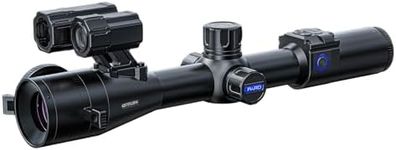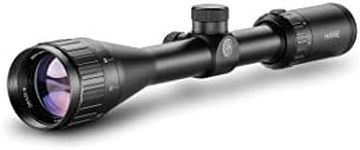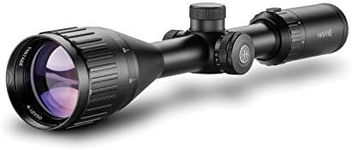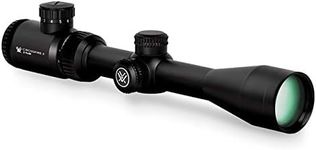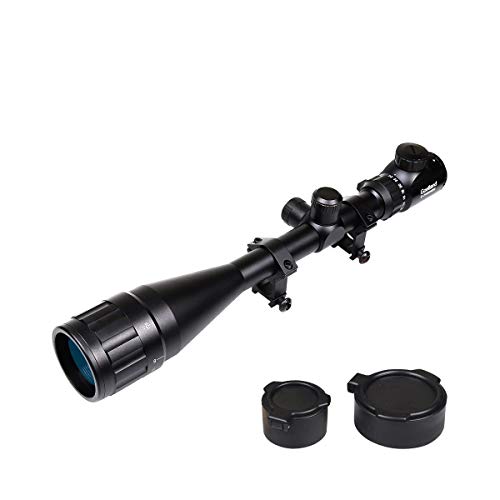We Use CookiesWe use cookies to enhance the security, performance,
functionality and for analytical and promotional activities. By continuing to browse this site you
are agreeing to our privacy policy
Best Rifle Scopes
From leading brands and best sellers available on the web.#2

Vortex
Vortex Optics Strike Eagle 5-25x56 (MOA) FFP EBR-7C Telescopic Rifle Sight
View Product
#3

Hawke
Hawke Sidewinder 30 FFP 6-24x56 Riflescope - FFP Half Mil
View Product
#4
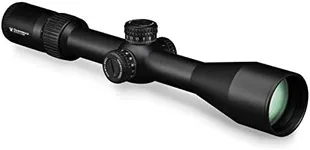
Vortex
Vortex Optics Diamondback Tactical Rifle Scope 6-24x 50mm Side Focus First Focal EBR-2C MOA Reticle Matte
View Product
#5

Hawke
Hawke NEW Sidewinder 4-16x50 SF IR Riflescope 30mm
View Product
#6

Vortex
Vortex Viper 6.5-20x50 PA Rifle Scope Mil Dot Reticle Multi Coated Waterproof
View Product
#7
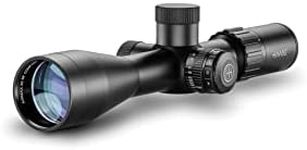
Hawke
Hawke Airmax Compact 4-16x44 IR SF Riflescope
View Product
#8
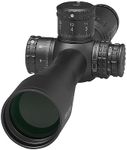
Arken Optics
Arken Optics SH4J 6-24X50 Rifle Scope FFP Illuminated Reticle with Zero Stop 34mm Tube
View Product
#9

Hawke
Hawke Airmax First Focal Plane 6-24×50 SF IR Riflescope 30mm
View Product
#10
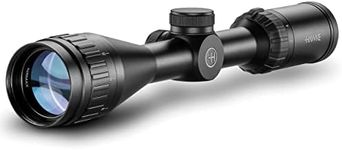
Hawke
Hawke Airmax 3-9x40AO Riflescope 1"
View Product
Buying Guide for the Best Rifle Scopes
Choosing the right rifle scope can significantly enhance your shooting experience, whether you're hunting, target shooting, or engaging in competitive shooting. A rifle scope helps you see your target more clearly and aim more accurately. When selecting a rifle scope, it's important to consider the type of shooting you'll be doing, the environment you'll be in, and your personal preferences. Understanding the key specifications of rifle scopes will help you make an informed decision that best suits your needs.MagnificationMagnification refers to how much closer the target appears through the scope compared to the naked eye. This is important because it determines how well you can see your target at various distances. Scopes are often labeled with a number followed by an 'x', such as 3x or 9x, indicating the level of magnification. Lower magnification (1x-4x) is suitable for close-range shooting and fast target acquisition, while higher magnification (9x and above) is better for long-range shooting where precision is crucial. Choose a magnification level based on the typical distance you'll be shooting.
Objective Lens DiameterThe objective lens diameter is the size of the front lens of the scope, measured in millimeters. This spec is important because it affects the amount of light that enters the scope, impacting image brightness and clarity. Larger diameters (40mm-50mm) allow more light, which is beneficial in low-light conditions, but they can also make the scope heavier. Smaller diameters (20mm-32mm) are lighter and more compact, suitable for daylight shooting. Consider the lighting conditions you'll be shooting in to determine the right objective lens size for you.
ReticleThe reticle, or crosshair, is the aiming point you see when looking through the scope. It's important because it helps you align your shot. Reticles come in various styles, such as duplex, mil-dot, and BDC (bullet drop compensator). A simple duplex reticle is great for general use, while a mil-dot reticle can help with range estimation and windage adjustments. BDC reticles are useful for long-range shooting where bullet drop is a factor. Choose a reticle based on your shooting style and the level of precision you require.
Field of ViewField of view (FOV) is the width of the area you can see through the scope at a given distance, usually measured in feet at 100 yards. This is important because a wider FOV allows you to see more of your surroundings, which is beneficial for tracking moving targets. A scope with a lower magnification typically offers a wider FOV, while higher magnification narrows it. If you're shooting at moving targets or need situational awareness, opt for a scope with a wider FOV.
Eye ReliefEye relief is the distance between your eye and the scope's eyepiece while still being able to see the full image. This is crucial for comfort and safety, especially with high-recoil rifles. Longer eye relief (3.5 inches or more) is preferred for powerful rifles to prevent injury from recoil. Shorter eye relief (around 3 inches) is common in lower-recoil firearms. Consider the type of rifle you have and your comfort level when choosing the appropriate eye relief.
Parallax AdjustmentParallax adjustment is a feature that allows you to correct the parallax error, which occurs when the reticle appears to move against the target when you move your head. This is important for maintaining accuracy, especially at long distances. Scopes with adjustable parallax are beneficial for precision shooting beyond 150 yards. If you plan to shoot at varying distances, a scope with parallax adjustment can help ensure your shots remain accurate.
